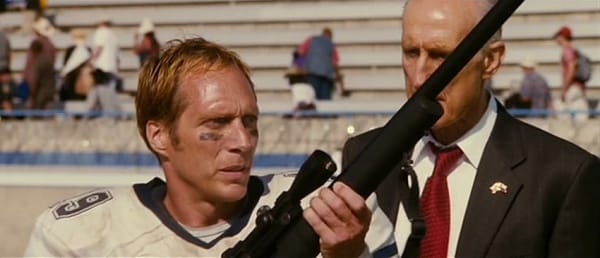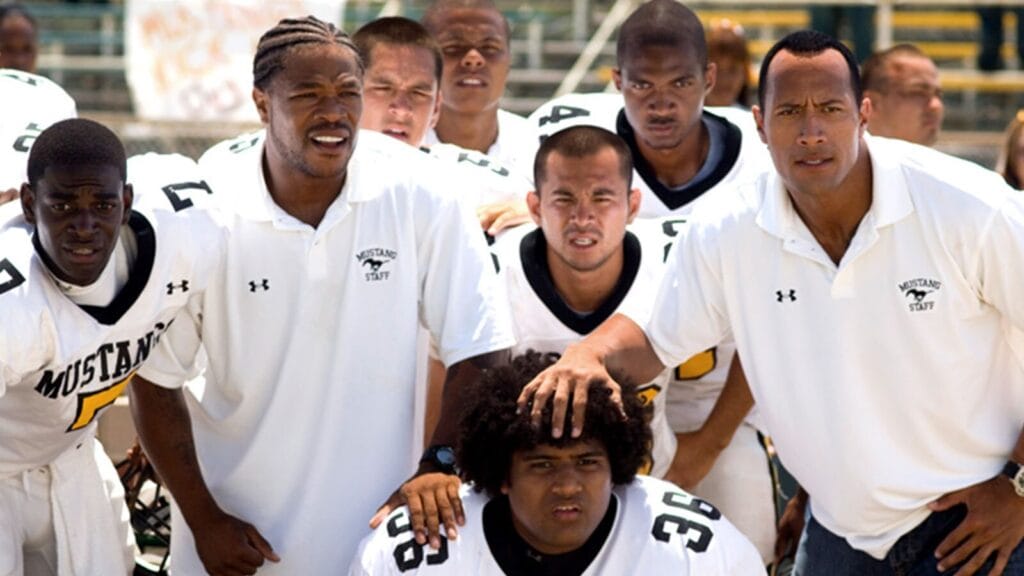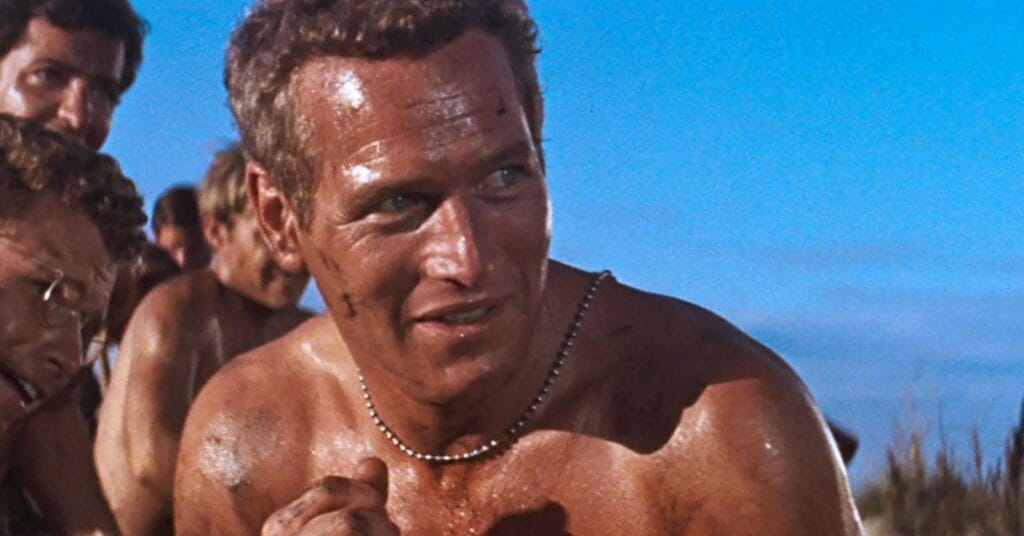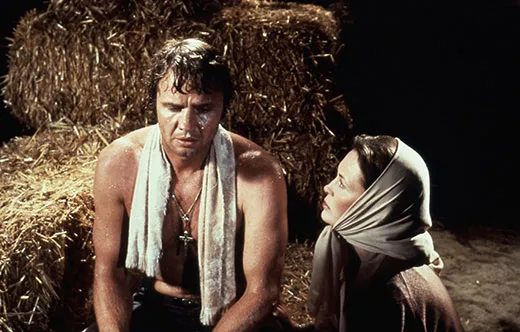The genre of prisoner movies often explores themes of redemption, camaraderie, and survival, but when sports are introduced into the mix, these films transcend the typical prison narrative. They show how sports can act as a vehicle for hope, discipline, and even rebellion within the confines of incarceration. Movies like “The Longest Yard” (2005), starring Adam Sandler, provide perfect examples of how sports can bridge the gap between confinement and freedom, both metaphorically and literally.
In this article, we’ll explore some notable prisoner movies that incorporate sports, discuss their cultural significance, and analyze the impact these films have had on the portrayal of sports within the prison system.
“The Longest Yard” – A Football Classic
“The Longest Yard“, a remake of the 1974 film starring Burt Reynolds, follows the story of Paul Crewe (played by Adam Sandler), a former NFL quarterback who ends up in prison. Once inside, he’s tasked with assembling a football team of inmates to compete against the prison guards in a highly anticipated game. What makes “The Longest Yard” so compelling is not just its comedic value but also the way it portrays football as a symbol of rebellion and empowerment for the prisoners.
Football in “The Longest Yard” serves as a metaphor for freedom. Despite being confined, the prisoners can channel their frustration and reclaim a sense of control over their lives through sport. As the game unfolds, the dynamic between the guards and the prisoners mirrors societal tensions, with football acting as the equalizer. For the inmates, the football field becomes the one place where they can assert their dignity and push back against a corrupt system.
Sports as Redemption in Prisoner Movies
Like “The Longest Yard”, many other prisoner movies incorporate sports as a way to highlight themes of redemption and transformation. For example:
- “Escape to Victory” (1981): Set during World War II, this film tells the story of Allied prisoners of war who are forced to play a football match against a Nazi team. The prisoners use the match as an opportunity to plan their escape. While the film deals with war and incarceration, it also shows how football can unify people under duress and become a platform for resistance.
- “Mean Machine” (2001): A British remake of “The Longest Yard”, “Mean Machine” stars Vinnie Jones as a disgraced footballer who forms a team of inmates to play against the guards. Like its American counterpart, “Mean Machine” highlights the ability of sports to foster camaraderie among the inmates and offers a way for them to reclaim their self-worth.
The Intersection of Sports and Prison Life
Prison sports films often explore the intersection between athleticism and incarceration, showing how the structure and discipline of sports can have a profound impact on prisoners. These movies reveal how sports provide a sense of normalcy and purpose to inmates, offering them an outlet for physical and emotional expression.
In real-world prison systems, sports are frequently used as a form of rehabilitation. Inmates participate in team sports like basketball, football, and soccer, which helps them learn valuable life skills, including teamwork, discipline, and perseverance. Sports programs in prison also help improve mental health by reducing stress and giving inmates a constructive way to spend their time.
In movies like “The Longest Yard”, sports take on an even greater symbolic role. Beyond offering a simple diversion, the game becomes a way for prisoners to fight back against oppressive authority figures. It reflects broader social themes of power, control, and the desire for freedom—on and off the field.
Cultural Impact of Sports Prisoner Movies
Prisoner movies that focus on sports have left an indelible mark on popular culture, blending powerful themes of redemption, rebellion, and camaraderie. “The Longest Yard” is a prime example, celebrated for its ability to combine humor with deeper societal themes. The film shows how football, an inherently competitive and physical sport, becomes a tool for inmates to push back against an oppressive system. It goes beyond simple entertainment, sparking larger conversations about empowerment, resilience, and how marginalized individuals can reclaim dignity even in the harshest environments.
One of the most profound ways these films resonate is through their portrayal of sports as a form of liberation—a temporary escape from the daily struggles of prison life. In these movies, the prison yard transforms into an arena where inmates can express themselves, challenge authority, and regain a sense of control. The way sports are depicted reflects broader societal issues, particularly the power dynamics between those in control (guards or oppressive figures) and the oppressed (the prisoners).
Furthermore, prisoner sports films showcase the ability of competition to unite individuals who might otherwise have little in common. Whether it’s soccer in “Escape to Victory” or football in “The Longest Yard”, sports bring together a diverse group of characters, often from different backgrounds and races, fostering unity in the face of adversity. This portrayal of teamwork and camaraderie speaks to the universality of sports, transcending barriers of class, race, and even criminal history.
The emotional stakes are amplified when prisoners—typically seen as society’s underdogs—band together to take on a more powerful adversary. The tension of watching prisoners overcome physical and mental challenges on the field mirrors their larger struggles for freedom, justice, and identity. This underdog narrative resonates deeply with audiences, who are drawn not only to the excitement of the sports competition but also to the deeper story of personal and collective redemption.
In addition to these layered themes, the entertainment value of competition in sports-driven prisoner movies is undeniable. The thrill of watching inmates, often portrayed as misfits or forgotten by society, work together to defy the odds and achieve something greater than themselves is universally appealing. This blend of action, drama, and hope makes sports prisoner films stand out as more than just entertainment; they become stories of transformation and human resilience.
Beyond their cultural impact, these films have also contributed to real-world discussions about the role of sports in rehabilitation programs. Inmates in many prisons participate in sports as part of their rehabilitation process, learning teamwork, discipline, and leadership—skills that can help them reintegrate into society. Movies like “The Longest Yard” and “Gridiron Gang” have sparked public interest in how sports can serve as a tool for reform and personal growth within the prison system.
Other Notable Prisoner Sports Movies
In addition to “The Longest Yard” and “Escape to Victory”, several other movies have combined the elements of sports and imprisonment in intriguing ways. These films, though varied in tone and style, share a common theme: the transformative power of sports within the harsh reality of prison life.
- “Gridiron Gang” (2006): This movie, starring Dwayne “The Rock” Johnson, tells the story of a group of juvenile inmates who are given a second chance through football. Based on a true story, “Gridiron Gang” highlights how sports can be used as a tool for rehabilitation, helping troubled youth develop self-discipline, accountability, and teamwork. The film echoes the themes found in “The Longest Yard”, where football serves as a vehicle for personal growth and redemption.
- “Cool Hand Luke” (1967): While not strictly a sports movie, “Cool Hand Luke” includes several memorable scenes of physical competition, most notably the boxing match between the titular character Luke and his fellow inmates. Luke’s defiant spirit in the face of institutional oppression is symbolized through his participation in these athletic challenges, which reflect his refusal to conform. While football or soccer might not be at the center of the film, the competitive nature of sports is still used to explore themes of rebellion and freedom.
- “The Champ” (1979): Although this movie is more of a boxing drama, it intersects with themes of incarceration and redemption. The film revolves around a former boxer who ends up in prison and tries to rebuild his relationship with his son through the sport that once defined him. “The Champ” explores how sports can be a lifeline for those seeking redemption, even from behind bars.
Conclusion: Sports as a Tool for Transformation
When we look at prisoner movies like “The Longest Yard”, it becomes clear that sports serve as more than just entertainment. In these films, sports represent a path to redemption, an outlet for rebellion, and a means of forging bonds in the most unlikely of circumstances.
These stories show that even within the confines of prison walls, sports can provide hope, healing, and empowerment. For many prisoners, the discipline and teamwork required in sports translate into valuable life skills that help them navigate their time in incarceration and prepare for life beyond it.
From the football field in “The Longest Yard” to the soccer pitch in “Escape to Victory”, sports are used as a metaphor for freedom, struggle, and ultimately, triumph. As these films demonstrate, no matter the odds, the power of competition can break down barriers and offer a glimpse of hope, even in the most challenging of circumstances.
For fans of both sports and cinema, the blend of athletic competition with the dramatic intensity of prison life offers a compelling narrative that resonates on multiple levels. These films remind us that sports can transcend the limitations of time, place, and circumstance, providing a sense of purpose and possibility to those who need it most.





